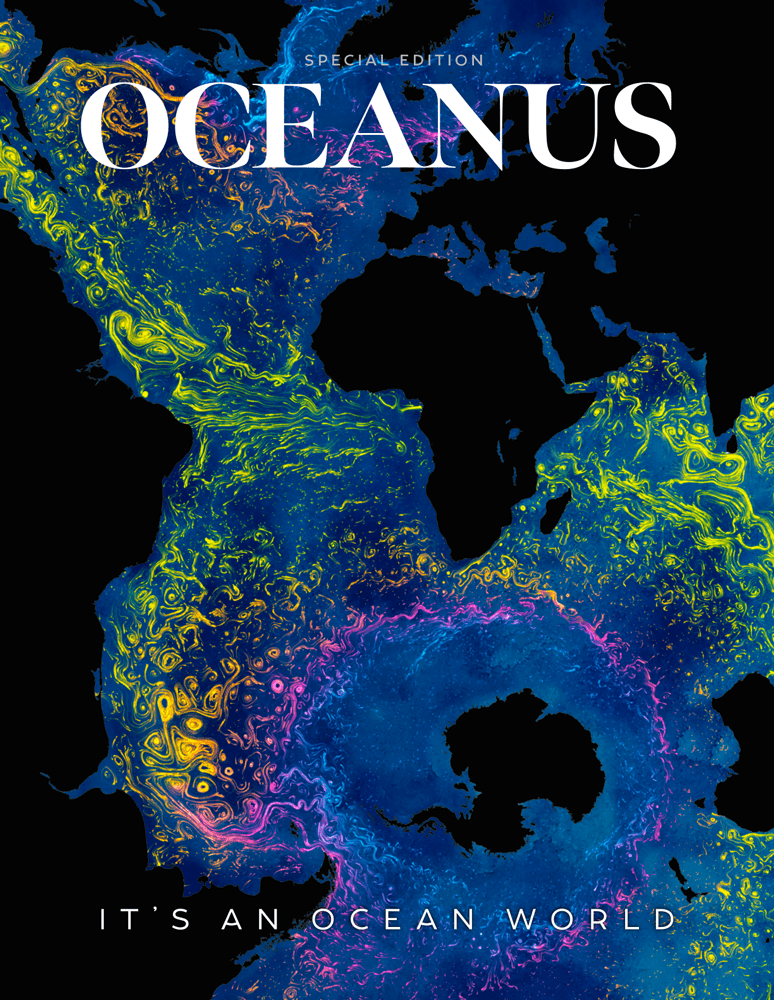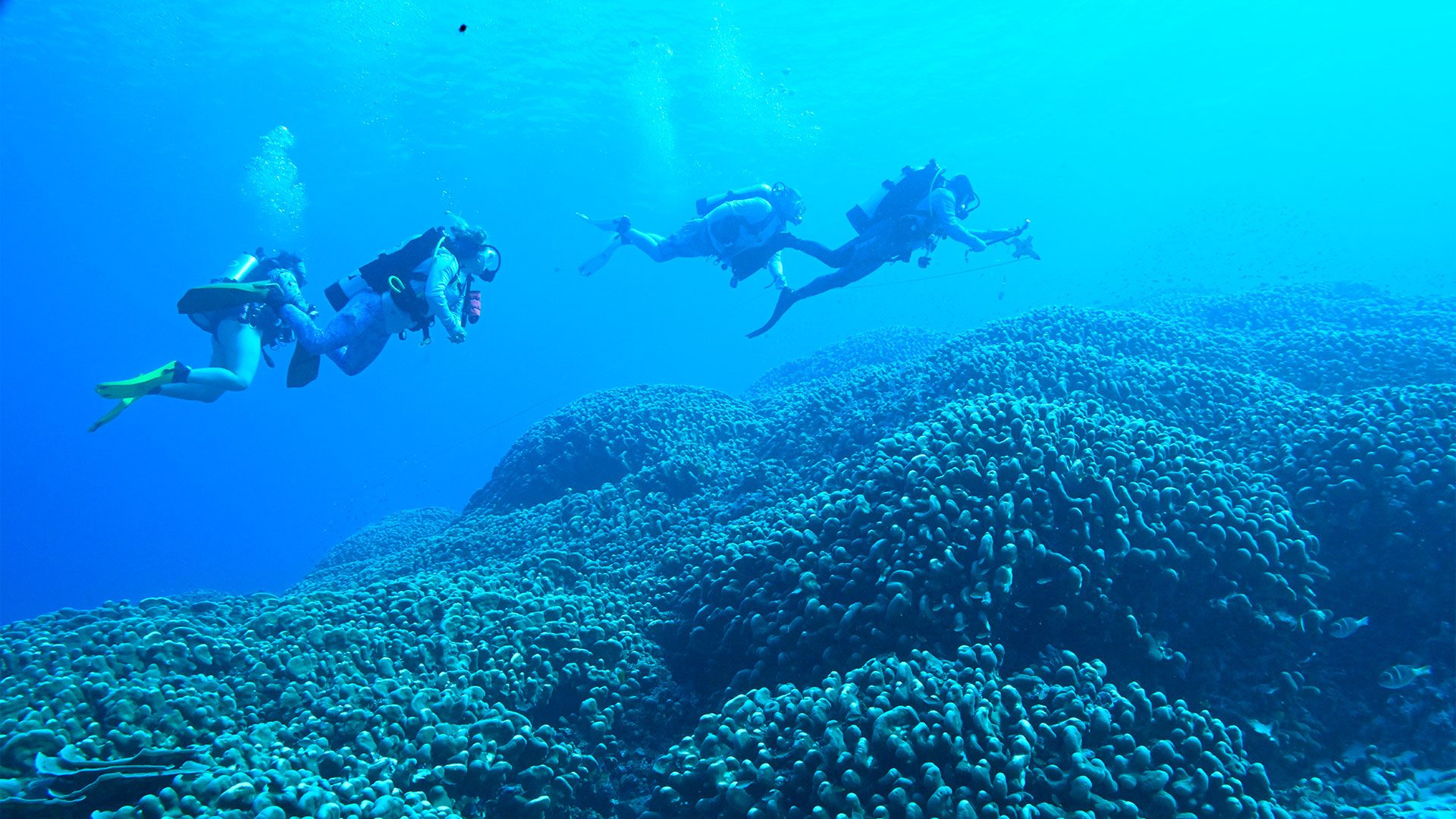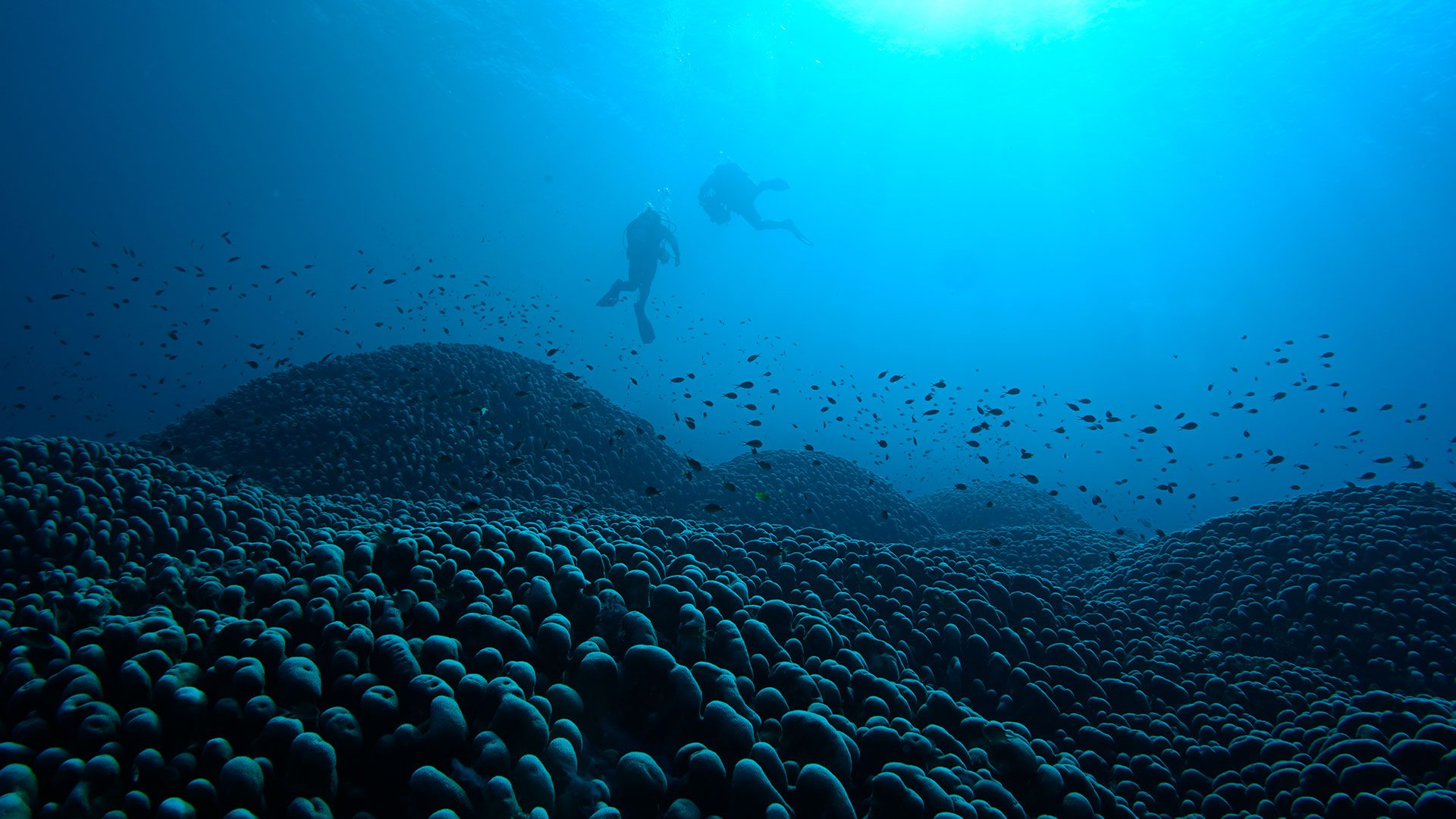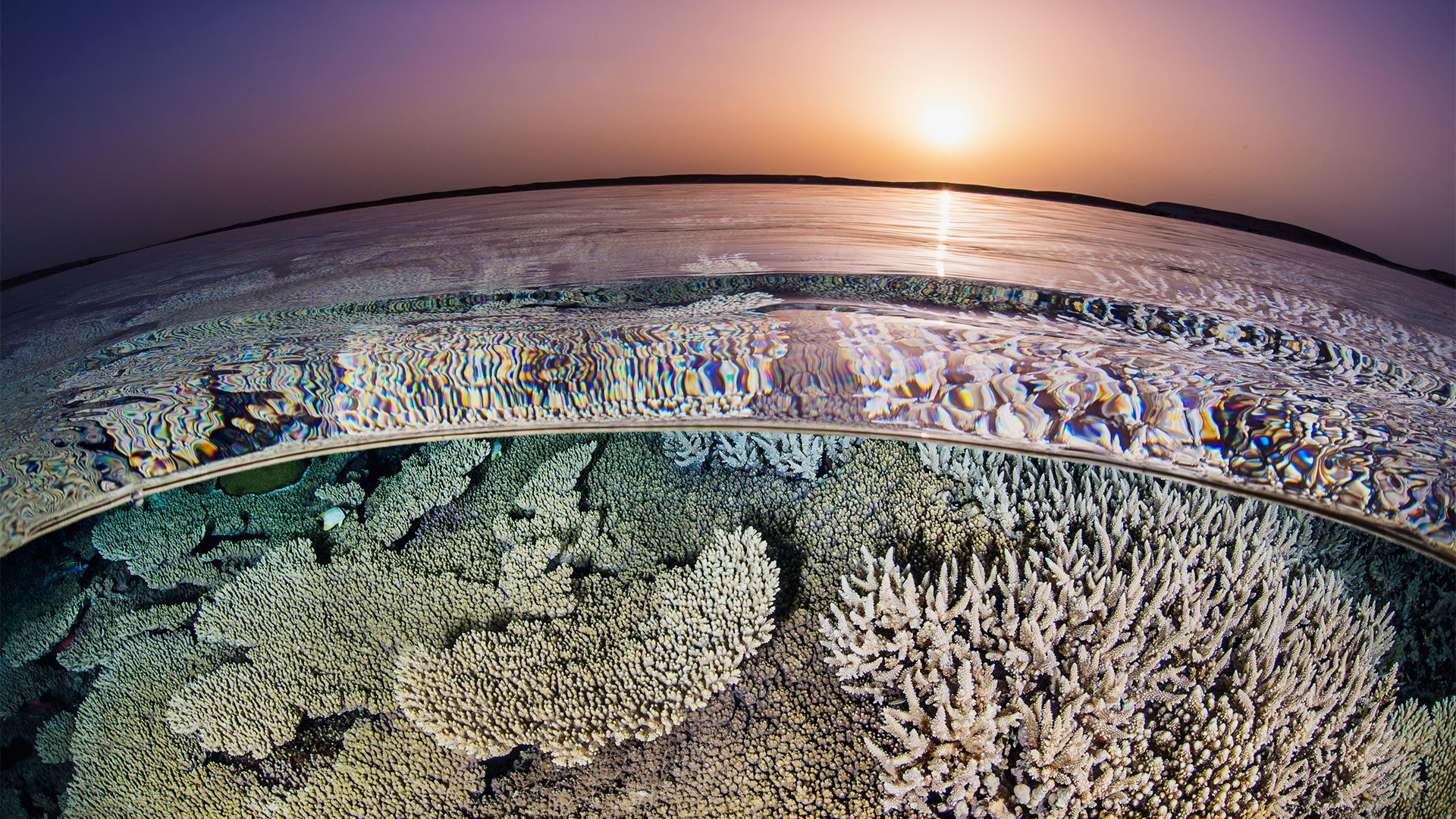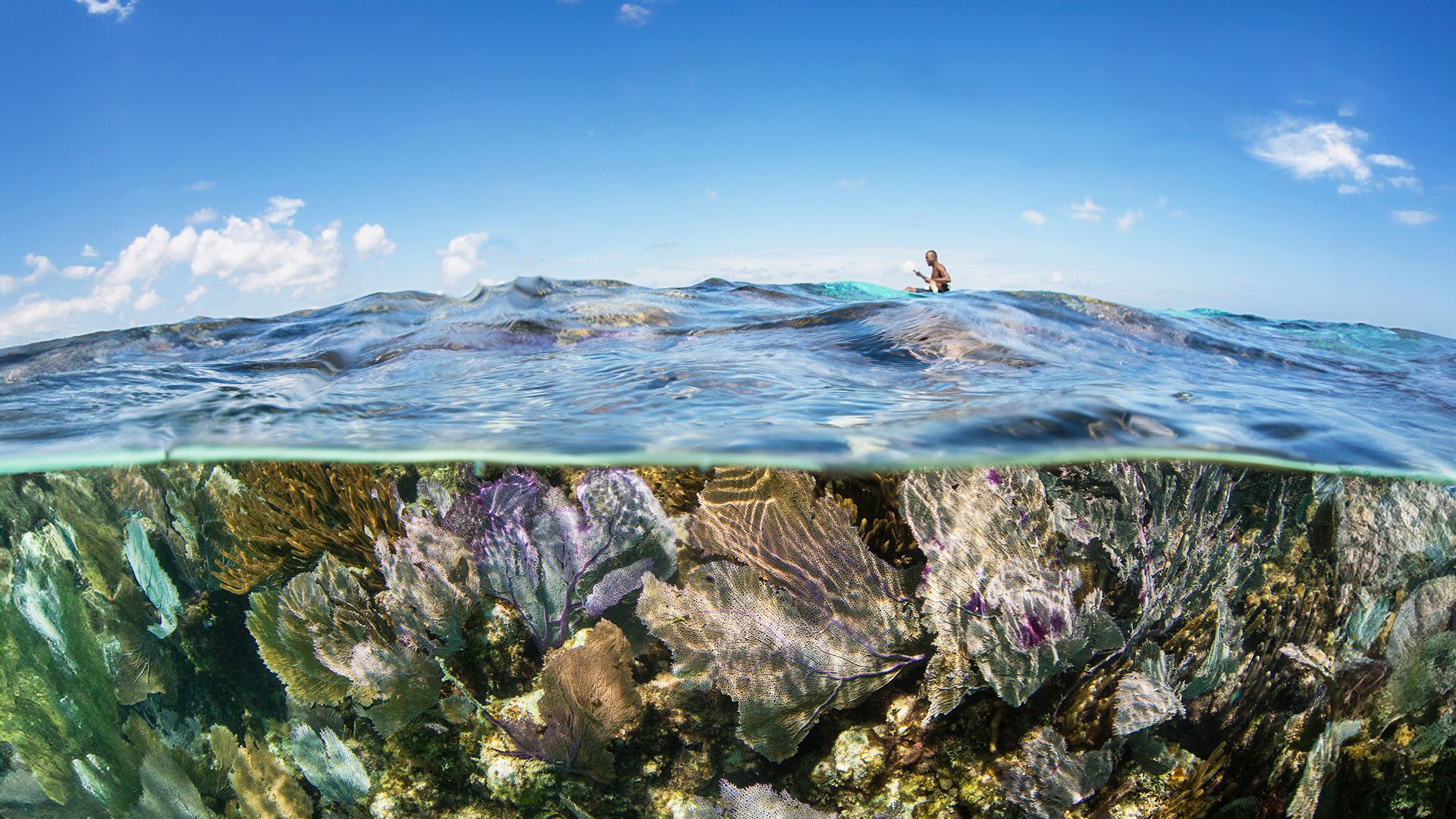The world’s largest coral colony can be seen from space. Hiding in plain sight for centuries, the ‘mega coral’ has quietly thrived in the crystal blue waters of the Solomon Islands in the South Pacific Ocean.
Spanning an area about the size of two basketball courts and built from an estimated one billion polyps, the massive coral colony is thought to be more than 300 years old.
In 2024, divers from National Geographic’s Pristine Seas were stunned when they stumbled upon the massive coral during an expedition to the region. When WHOI’s senior scientist Gordon Zhang heard news about the coral, he was determined to see it with his own eyes.
In August 2025, Amy Apprill, leader of WHOI's Reef Solutions Initiative, assembled a team of researchers led by Zhang. The field team began a 60-hour journey from Boston to the Solomon Islands. From there, they boarded the Wildberry, a superyacht owned by WHOI Corporation Member Bill Berry. The team embarked on a 15-hour voyage to the coral’s coordinates, located off the Three Sisters Islands.
“Everyone was eager to dive into the water to see it,” recalls Zhang. “It was amazing once we got in the water. This was the biggest single species of coral I’ve ever seen. I didn’t know something like this could even exist.”
The coral species is Pavona clavus, a brown-colored colonial stony coral, tinged with yellow, blue, and red highlights. The enormous structure provides habitat and breeding grounds for an array of species, including shrimp, crabs, and fish.
“It was definitely a once-in-a-lifetime experience,” remarked Erin Lyons, research associate in the Marine Chemistry and Geochemistry Department at WHOI. “To see the full height of the coral, we dove deep down in 120 feet of water. We spotted a large shark resting beneath the structure. It looked tiny in comparison to the massive coral.”
The mega coral, named Laloniasi by a local chief, lies within the Coral Triangle, a large geographic region in the central western Pacific Ocean. The area hosts an astounding 500 species of coral, containing 76% of the world's coral species and 37% of its reef fish species.
Healthy coral reefs are celebrated as the “rainforest of the sea”, bursting with colorful ocean life beneath the waves. While corals may resemble rocks, they are actually built by tiny marine animals called polyps, which secrete limestone to form large colonies. These intricate structures provide habitat for twenty-five percent of the world’s marine biodiversity.
Yet, rising ocean temperatures due to climate change are devastating reefs. Since 1950, half of the world’s coral reefs have been lost. In recent years, bleaching-level heat stress affected 84% of reefs. When corals bleach, the vibrant reefs become dull, grey, and silent graveyards.
“Corals around the world are in crisis,” Zhang says. “We didn’t have a clear idea of what was happening with corals in the Solomon Islands region. This expedition was our first opportunity to assess the status of reefs in this marine biodiversity hotspot.”
Following the dive, WHOI’s field team launched a health assessment of the mega coral and surrounding reefs. As a pilot study, they deployed sensors to measure currents, temperature, salinity, and pressure to provide insight into the reef’s hydrodynamics and wave conditions. The team also recorded fish sounds and acoustics on the reefs, completed benthic surveys, conducted fish counts, and collected water samples to analyze the microbiome of the reefs.
“Applying our methodologies to areas such as the massive coral Laloniasi represents the culmination of years of research from various scientists and engineers,” said Trevor Milliken, research assistant at WHOI. “This expedition was a major milestone towards our vision of scaling Reef Solutions’ methods globally. It was an unforgettable experience.”
Through partnerships with National Geographic’s Pristine Seas and the Ocean Exploration Trust, WHOI connected with local community leaders. The team was privileged to meet Chief Dennis Marita of the Ministry of Culture and Tourism, who serves on Malaulalo, one of the Three Sisters Islands and home to the mega coral. He shared that local people refer to the reefs as ‘sea gardens’ and are concerned that publicity around the coral could draw overtourism.
To address their concerns, the Reef Solutions team would like to provide Chief Marita’s community with the necessary knowledge and tools for protecting the coral reefs. “We gathered some preliminary data, but more importantly, we gained vital partnerships. We hope to continue working with the local community, establish a reef monitoring system, and bring the science to the people who live there,” said Zhang.
With a deeper understanding of the world’s largest coral colony, this expedition marks a significant step forward for scientific research and reef conservation in the Coral Triangle.
